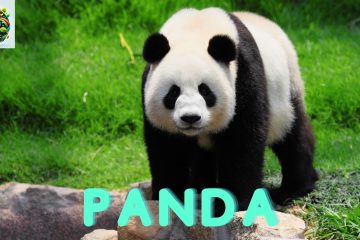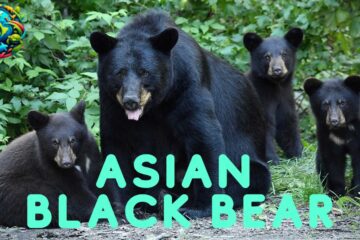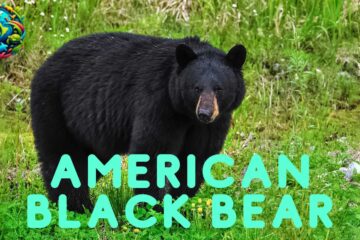Water Deer: Unique Residents of Wetlands
Water Deer: Unique Residents of Wetlands
Introduction
The water deer, often called the “vampire deer” due to its distinctive tusks, is a small and unique species of deer native to China and Korea. Unlike most deer, water deer lack antlers and instead have prominent canine teeth. Adapted to life in wetlands and river valleys, these elusive creatures play a vital role in their ecosystems. This article delves into the fascinating world of water deer, covering their habitats, physical characteristics, behaviors, and much more.
Amazing Facts
Water deer possess numerous intriguing attributes:
- Tusks: Unlike most deer, males have long, curved canine teeth, which can grow up to 3 inches (8 cm) and are used in combat and display.
- No Antlers: Both males and females lack antlers, a unique trait among deer species.
- Adaptability: They thrive in wetland habitats, including swamps, marshes, and riverbanks.
- Excellent Swimmers: As their name suggests, these deer are adept swimmers and can move easily through water to escape predators.
- Longevity: In the wild, they can live up to 12 years, while in captivity, they may live slightly longer.
Habitat and Food
These adaptable creatures thrive in specific environments that cater to their unique lifestyle.
Habitat:
- Native to China and Korea, water deer inhabit wetlands, river valleys, and marshy areas.
- They prefer environments with abundant water sources and dense vegetation, which provide cover from predators and access to food.
- These deer are often found in reed beds, tall grasses, and brushy areas near rivers and lakes.
Food:
- Herbivorous, with a diet consisting of grasses, leaves, aquatic plants, and shrubs.
- During the spring and summer, they feed on a variety of herbaceous plants and fresh shoots.
- In the fall and winter, they browse on woody vegetation and the bark of trees.
- They are known to forage for cultivated crops, sometimes leading to conflicts with farmers.
Appearance
Water deer are known for their unique and striking appearance. Key characteristics include:
- Size: Adults stand about 1.5 to 2 feet (45 to 60 cm) tall at the shoulder and weigh between 20 to 31 pounds (9 to 14 kg).
- Color: Their coat is generally reddish-brown in the summer, turning to a more grayish-brown in the winter. They have a lighter underbelly.
- Tusks: Males possess long, curved canine teeth that can grow up to 3 inches (8 cm). These tusks are used for defense and display during mating season.
- Build: They have slender, agile bodies with long legs adapted for running and swimming.
- Face: They have a short snout, large dark eyes, and prominent ears, giving them a gentle and inquisitive expression.
Types/Subspecies of Water Deer
There are two main populations of water deer, each adapted to their specific environments:
- Chinese Water Deer (Hydropotes inermis inermis): Found primarily in eastern China, this population inhabits marshy and riverine areas.
- Korean Water Deer (Hydropotes inermis argyropus): Native to Korea, this population also prefers wetlands and dense vegetation near water sources.
Predators and Threats
Despite their agility and adaptability, water deer face various natural and human-induced threats that impact their survival.
Natural Predators:
- Tigers: In their native range, tigers are one of the primary predators.
- Leopards: Leopards also prey on these deer, particularly targeting younger or smaller individuals.
- Wolves: Packs of wolves can pose a significant threat, using teamwork to hunt.
- Domestic Dogs: In areas near human habitation, domestic dogs may pose a threat to these deer.
Threats:
- Habitat Loss: Urban development, agriculture, and wetland drainage reduce available habitats.
- Human-Wildlife Conflict: They often come into conflict with humans when they raid crops or are involved in vehicle collisions.
- Poaching: Illegal hunting for their meat and hides can threaten specific populations.
- Climate Change: Alterations in weather patterns and habitat conditions due to climate change can impact food availability and migration patterns.
Mating
Water deer exhibit unique and complex mating behaviors, essential for the continuation of their species.
- Breeding Season: The rut typically occurs from November to January.
- Courtship Displays: Males engage in courtship behaviors such as vocalizations, tusk displays, and physical sparring to attract females.
- Territoriality: During the rut, males become highly territorial and will fight rivals to maintain dominance and access to females.
- Gestation and Birth: After a gestation period of about 6 to 7 months, females give birth to one to three fawns, usually in May or June. Fawns are hidden in dense vegetation for protection and are weaned by the age of 3 to 4 months.
How They Communicate
Water deer use various methods to communicate with each other, particularly during mating and social interactions.
Vocalizations:
- Barks and Grunts: Used to communicate alarm, establish dominance, and maintain contact within groups.
- Bleats: Fawns emit high-pitched bleats to communicate with their mothers.
Body Language:
- Posturing: Males use body postures, such as raised hackles, tail positioning, and ear movements, to convey aggression, submission, or readiness to mate.
- Tusk Displays: Males use tusk displays and sparring to establish dominance and attract mates.
Chemical Signals:
- Scent Marking: They use scent glands located on their legs and face to mark territory and signal reproductive status.
Religious and Cultural Significance
Water deer hold significant symbolic and cultural importance in various societies:
Asian Cultures:
- Spiritual Symbol: In Chinese and Korean cultures, these deer are associated with beauty and grace, often featured in traditional art and folklore.
- Conservation Symbol: They are often used in conservation campaigns to raise awareness about wildlife protection and the importance of preserving wetland habitats.
Modern Symbolism:
- Popular Culture: These animals appear in various forms of media, from literature and art to documentaries, symbolizing the uniqueness and resilience of wetland wildlife.
Movies Featuring These Unique Creatures
Water deer have been featured in various films and documentaries, showcasing their behaviors and the challenges they face:
- “Planet Earth II” (2016): The “Islands” episode includes stunning footage of these deer in their natural habitat, showcasing their interactions with other wildlife.
- “The Life of Mammals” (2002): A BBC documentary series narrated by David Attenborough, featuring segments on these animals and their survival strategies.
- “Wild China” (2008): A documentary series that explores the diverse wildlife of China, featuring segments on these deer and their unique adaptations.
Pronunciation in Different Languages
The term for these unique creatures is pronounced differently across various languages, reflecting linguistic diversity:
- English: /ˈwɔːtər dɪr/
- Spanish: /ciervo de agua/
- French: /cerf d’eau/
- German: /Wasserhirsch/
- Italian: /cervo d’acqua/
- Mandarin Chinese: /水鹿 (shuǐ lù)/
- Japanese: /ウォーター・ディア (wōtā dia)/
- Russian: /водяной олень (vodyanoy olen’)/
- Arabic: /غزال الماء (ghazal alma’)/
- Hindi: /जल हिरण (jal hiran)/
FAQs
Q: What do water deer eat? A: Water deer are herbivores, with a diet that includes grasses, leaves, aquatic plants, and shrubs. They forage on a variety of herbaceous plants and browse on woody vegetation and tree bark.
Q: Where do water deer live? A: Water deer inhabit wetlands, river valleys, and marshy areas in China and Korea. They prefer environments with abundant water sources and dense vegetation.
Q: How do water deer communicate? A: Water deer communicate through vocalizations such as barks and grunts, body language including posturing and tusk displays, and chemical signals like scent marking.
Q: Are water deer endangered? A: While some populations are stable, others face threats from habitat loss, human-wildlife conflict, poaching, and climate change. Conservation efforts are essential to protect vulnerable populations.
Q: What is unique about their reproduction? A: Water deer typically have a breeding season from November to January, with males engaging in courtship displays and territorial battles. After a gestation period of about 6 to 7 months, females give birth to one to three fawns, which are hidden in dense vegetation for protection.
Water deer symbolize the uniqueness and resilience of wetland wildlife, playing a vital role in their ecosystem and human culture. This exploration highlights their unique traits and behaviors, celebrating the complexity and charm of these remarkable animals.







